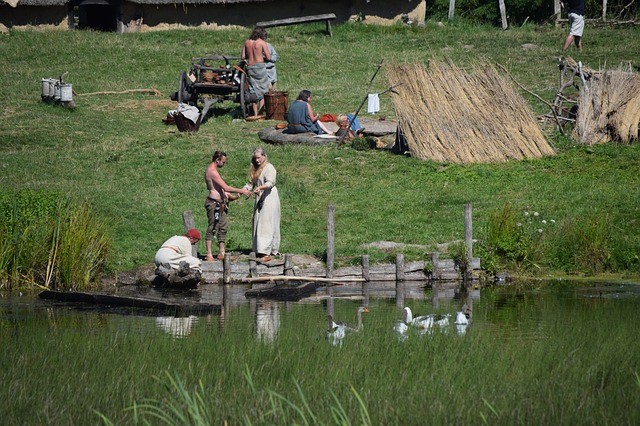
A new study by scholars on why Vikings left their home in Greenland offers a hypothesis about why these people went after colonizing the area successfully.
Another perspective is how history books should be revised how the even is seen via new allegations. Several hypotheses have been shut and sealed on how the event is interpreted through another lens.
Reason Why the Vikings Left
No one knows how the Norsemen ever decided to leave south Greenland during the start of the 15th century after settling in 985. How it came to happen has not been answered yet, reported ScienceDaily.
One accepted conclusion is that the already freezing temperature like a mini-Ice Age is the culprit, forcing a departure for the medieval sailors.
A new inquiry headed by the University of Massachusetts Amherst is contesting the initial hypothesis in Science Advances.
The authors of the study said that freezing temperatures but drought caused the Norse populations to migrate from their homes.
Settling in Greenland, where these people called home, is the Eastern Settlement in 985; survival all year round was done by clearing shrubs and planting grass as food for animals they had.
The local population of the settlement reached about 2,000 people; four hundred years later, the ecosystem collapsed.
Norse Settlement
For a long time, everyone in the scientific community accepted the departure of Norse inhabitants as a cause by the effects of the mini-Ice Age, when temperatures dropped low in the North Atlantic, which killed the crops planted in the settlements.
Raymond Bradley, professor of geosciences at UMass Amherst, pointed out the significant fact; until the study, no exact data was taken from known Norse settlements, noted Eurekalert.
He went on to say that the ice core data employed in earlier studies to simulate historical Greenlandic conditions was obtained from a location over 1,000 kilometers north and over 2,000 meters higher in altitude, providing clues for the study of why Vikings left.
Furthermore, studies of how climate had the range to farm would factor; results took the team by surprise. He and his co-authors visited Lake 578, close to one of the largest groupings of farms in the Eastern Settlement and close to a former Norse farm.
The researchers gathered samples for three years at the lake that coincided with the climatic record at the selected location in two millennia.
A member of the group Boyang Zhao is the study lead researcher conducting the study for a Ph.D. related to geosciences and part of the Brown University.
Researchers analyzed the ancient sample with a lipid called BrGDGT, which can be used to reconstruct temperature.
Co-author, Isla Castaeda, explained that with an appropriate comprehensive record, one could directly connect the altering patterns of lipids to temperature changes.
Detecting the second market, which is a wax-like coat on plant leaves, can determine the rates at which the grasses and other livestock-sustaining plants lost water due to evaporation.
Zhao said while the temperature barely changed throughout the Norse settlement of southern Greenland, it became steadily drier over time.
Norse farmers had to feed their livestock stored hay over the winter, and even in good years, the animals were often so emaciated that they had to be dragged to the fields once the snow melted. The new study revealed the Vikings were victims of climatic conditions they had no control over and had to leave the Norse Settlement in Greenland.
Related Article: Seven Viking Tombs from the 10th Century With Remains of Eight People Discovered by Swedish Archeologists








